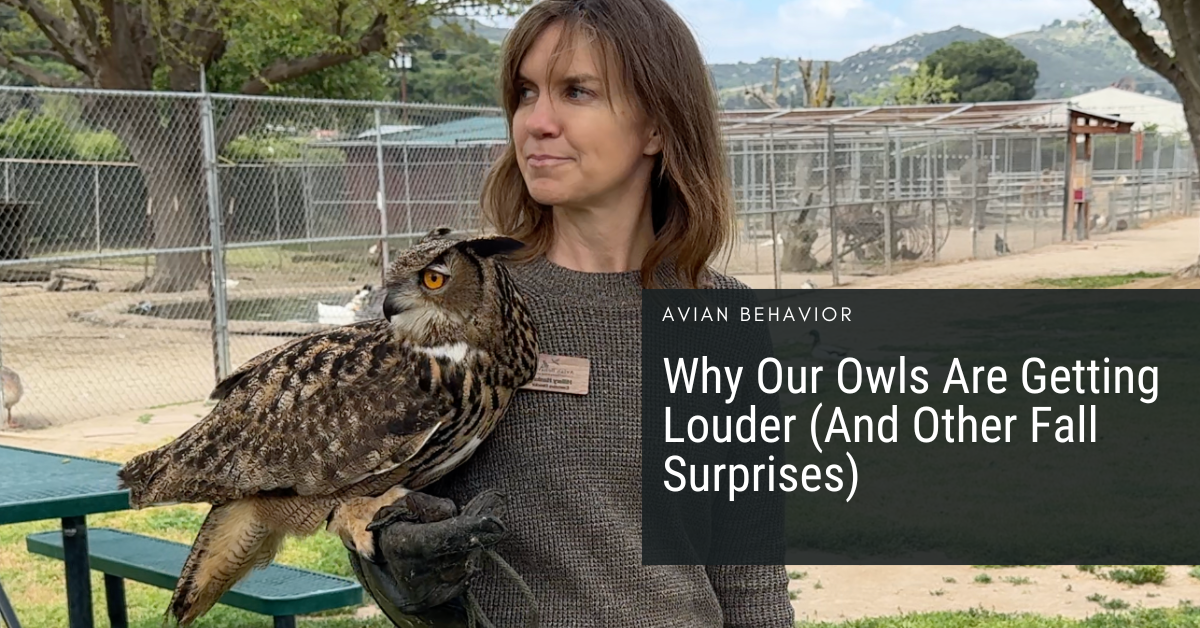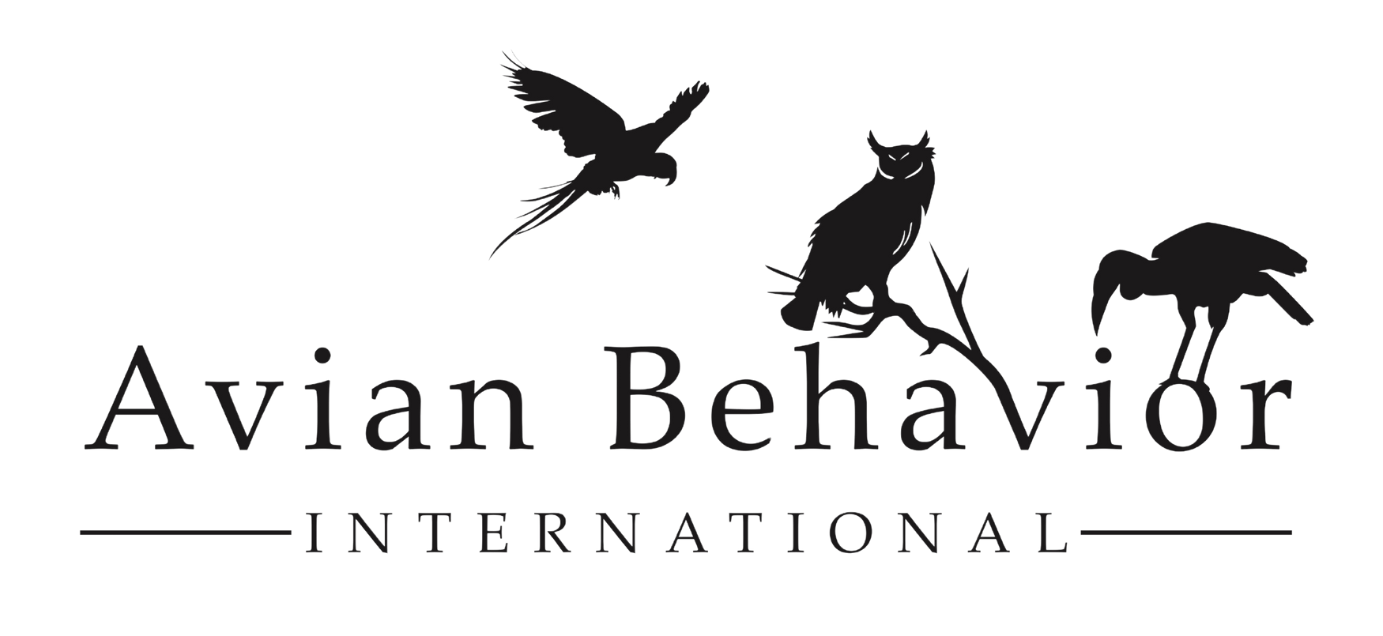
17 Nov Why Our Owls Are Getting Louder (And Other Fall Surprises)
November in Southern California doesn’t look like fall in most places. Our trees stay green, our temperatures stay mild, and you won’t find snow on the ground (unless you drive up to the mountains). But just because we don’t have dramatic seasonal changes doesn’t mean our birds aren’t noticing the shift.
At Avian Behavior Conservancy, our ambassador birds, from Nelson the white-faced owl to Goldie the American kestrel, are responding to subtle cues that tell them winter is coming. And their wild cousins across San Diego County are doing the same.
Here’s what’s happening with our feathered residents this time of year, and why fall and winter might just be the best time to meet them.
Our Birds Don’t Migrate (But They’re Still Changing)
Unlike the millions of migratory birds passing through San Diego County right now along the Pacific Flyway, our ambassador birds are year-round residents. They don’t fly thousands of miles to escape winter. But that doesn’t mean they’re not affected by the changing seasons.
Even in our mild climate, birds notice:
- Shorter daylight hours (triggering hormonal changes)
- Cooler temperatures (especially at night)
- Changes in prey availability (insects, rodents behaving differently)
- Shifts in territorial behavior (breeding season approaches for some species)
Let’s look at what’s actually going on with different groups of birds this time of year.
The Owls: Getting Ready to Get Loud
If you’ve been hearing more owl calls at night lately, you’re not imagining it. Fall and early winter is when many owl species start ramping up their vocalizations, and it’s all about real estate and romance.
Why Owls Get More Vocal in Fall/Winter
For many owl species, breeding season starts in late winter or early spring. But the prep work begins now. Owls are:
- Establishing territories – Those hoots and screeches you hear? That’s owls saying “this spot is mine”
- Attracting mates – Males start calling to let potential partners know they’re ready
- Defending nest sites – Competition for good nesting cavities gets fierce
Our owls, like Nelson and Nigel, may not be breeding, but they still respond to these seasonal cues. You might notice them being more vocal during evening programs or more alert and active during the shorter days.
The Energy Shift
Owls are also dealing with changes in their prey base. Moths, beetles, and other nocturnal insects (critical food for small owls like screech owls) become less active as temperatures drop. This means wild owls have to hunt more strategically, focusing on small rodents and other prey.
For our education birds, we adjust feeding routines to match their natural metabolic changes. They may eat slightly more to maintain body heat during cooler nights, even in San Diego’s relatively mild climate.
The Hawks and Falcons: Bold and Beautiful
Fall and winter is when raptors really shine. This is their season.
Why You See More Hawks in Winter
Even though San Diego doesn’t get harsh winters, we see an uptick in hawk activity from fall through spring:
- Better visibility – With less dense vegetation and clearer skies, hawks are easier to spot
- Hunting prime time – Small mammals are active, and hawks are taking advantage
- Northern visitors – Some hawk species from colder regions winter here, adding to our resident population
Red-tailed hawks, Cooper’s hawks, and sharp-shinned hawks become more visible across San Diego County this time of year. They’re perched on power lines, soaring over open spaces, and generally being more obvious about their presence.
Fresh Feathers for the Season
By November, most raptors have completed their annual molt. That means they’re sporting fresh, pristine feathers just in time for the most active part of their year.
When you meet our hawks during fall and winter programs, you’re seeing them at their peak—fully feathered, energized, and ready to show off their flight skills.
The Kestrels: Little Falcons with Big Personality
American kestrels like Goldie have their own seasonal rhythm. These tiny, colorful falcons are year-round residents in Southern California, but their behavior shifts with the seasons.
What Kestrels Do in Fall/Winter
- Increased territorial behavior – Kestrels start scoping out nest sites (they don’t build their own nests—they use cavities made by other birds or nest boxes we provide)
- That signature tail pump – Watch Goldie during a program and you’ll see her distinctive tail-pumping behavior, used for balance and communication
- More visible hunting – Kestrels hover over grasslands hunting for insects, small birds, and rodents, easier to spot in winter’s clearer conditions
This is also the season when our kestrel monitoring work really matters. We’re tracking where kestrels spend their time, what habitats they use, and how they’re adapting to changes in the landscape. Every data point helps us understand why California’s smallest falcon is declining.
The Parrots: Molting, Hormones, and Indoor Living
Our parrots, unlike our native raptors and owls, are originally from tropical climates. But even they respond to seasonal changes, particularly the shorter days.
Parrot Fall/Winter Behavior
- Molting timing – Many parrots molt in fall, replacing old feathers with fresh plumage
- Hormonal shifts – Shorter days can actually decrease hormonal behavior in some parrots (unlike spring when longer days trigger breeding)
- Energy needs – Even with our mild weather, parrots may need slight dietary adjustments to maintain condition
When you meet our parrots during winter programs, you might notice their feathers looking especially vibrant, that’s the post-molt glow.
Why Fall/Winter Is a Great Time to Visit
Here’s something most people don’t realize: fall and winter are actually ideal times to meet our birds.
The Benefits of Cooler Weather Programs
1. Comfortable temperatures for birds and humans
Our summer heat can be tough on both visitors and birds. Fall and winter offer perfect conditions for outdoor programs, mild temps, clear skies, and energized birds.
2. Birds are more active
Many of our raptors show increased activity levels in cooler weather. They’re more likely to fly readily, demonstrate natural behaviors, and engage actively in programs.
3. You’re seeing them in their element
Fall and winter mirror the conditions when wild raptors and owls are at their most active. When you meet our birds during this season, you’re seeing behavior patterns that reflect what’s happening in the wild right now.
4. Longer programs, better light
Cooler temps mean we can do longer outdoor sessions without heat stress. And the beautiful fall/winter light makes for incredible photography opportunities.
How Our Birds Help Their Wild Cousins
Nelson, Goldie, Nigel, and the rest of our ambassador birds don’t migrate or hunt wild prey. But they do something just as important: they build connections.
When you meet Nelson and learn about how artificial light affects moths, you start thinking about your outdoor lighting. When you watch Goldie fly and hear about declining kestrels, you might put up a nest box. When you see a hawk up close, you reconsider using rodenticides.
Every encounter is an investment in their wild relatives—and right now, those wild birds need all the help they can get.
Come Meet Them This Season
There’s never been a better time to experience what our birds are all about.
Whether you join us for a Bird of Prey Experience, an Owl Prowl, or one of our other programs, you’ll see these seasonal changes firsthand. You’ll watch owls at their most vocal time of year. You’ll see hawks with pristine new feathers. You’ll meet Goldie the kestrel as she demonstrates behaviors her wild cousins are doing right now across the county.
Our holiday schedule is filling fast, so if you’ve been thinking about visiting, now is the time to reserve your spot. These small-group experiences often sell out before December, and every visit helps us continue our conservation work right here in San Diego.

